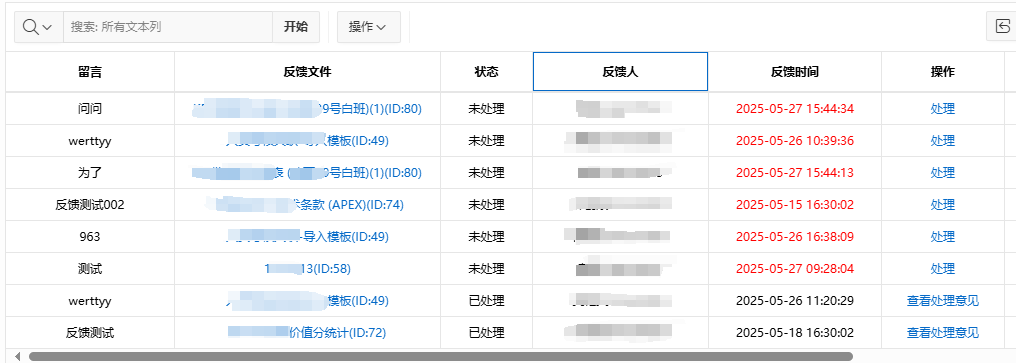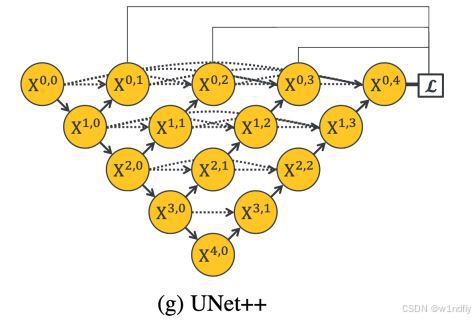beautifulsoup的简单使用
文章目录
- beautifulsoup
- 一. beautifulsoup的简单使用
- 1、安装
- 2、如何使用
- 3、对象的种类
- 二、beautifulsoup的遍历文档树
- 2.1 子节点
- .contents 和 .children
- descendants
- 2.2 节点内容
- .string
- .text
- 2.3 多个内容
- .strings
- **.stripped_strings**
- 2.4 父节点
- .parent
- .parents
- 三、beautiful的搜索文档树
- 3.1 find_all
- name 参数
- keyword 参数
- text 参数
- limit 参数
- 3.3 find()
- 3.4 find_parents() 和 find_parent()
- 四、beautifulsoup的css选择器
- 4.1 通过标签名查找
- 4.2 通过类名查找
- 4.3 id名查找
- 4.4 组合查找
- 4.5 属性查找
- 五.真实案例
- 1、使用 bs4提取豆瓣图书信息
- 2、匹配三国演义中的回合 并写入html文本中
- 3、匹配天气信息 城市与温度
- 4、匹配广州二手房 房源信息
beautifulsoup
一. beautifulsoup的简单使用
1、安装
Beautiful Soup支持Python标准库中的HTML解析器,还支持一些第三方的解析器,如果我们不安装它,则 Python 会使用 Python默认的解析器,lxml 解析器更加强大,速度更快,推荐安装。
pip install beautifulsoup4
2、如何使用
这是一个html的简单页面
html_doc = """
<html><head><title>The Dormouse's story</title></head>
<body>
<p class="title"><b>The Dormouse's story</b></p><p class="story">Once upon a time there were three little sisters; and their names were
<a href="http://example.com/elsie" class="sister" id="link1">Elsie</a>,
<a href="http://example.com/lacie" class="sister" id="link2">Lacie</a> and
<a href="http://example.com/tillie" class="sister" id="link3">Tillie</a>;
and they lived at the bottom of a well.</p><p class="story">...</p>
"""
使用BeautifulSoup解析这段代码,能够得到一个 BeautifulSoup 的对象,并能按照标准的缩进格式的结构输出:
from bs4 import BeautifulSoup
soup = BeautifulSoup(html_doc, 'lxml')
# html进行美化
print(soup.prettify())

这里介绍几个简单的浏览结构化数据的方法
soup.title # 获取标签title
# <title>The Dormouse's story</title>soup.title.name # 获取标签名称
# 'title'soup.title.string # 获取标签title内的内容
# 'The Dormouse's story'soup.title.parent # 获取父级标签soup.title.parent.name # 获取父级标签名称
# 'head'soup.p
# <p class="title"><b>The Dormouse's story</b></p>soup.p['class'] # 获取p的class属性值
# 'title'soup.a
# <a class="sister" href="http://example.com/elsie" id="link1">Elsie</a>soup.find_all('a')
# [<a class="sister" href="http://example.com/elsie" id="link1">Elsie</a>,
# <a class="sister" href="http://example.com/lacie" id="link2">Lacie</a>,
# <a class="sister" href="http://example.com/tillie" id="link3">Tillie</a>]soup.find(id="link3") # 获取id为link3的标签
# <a class="sister" href="http://example.com/tillie" id="link3">Tillie</a>
3、对象的种类
Beautiful Soup将复杂HTML文档转换成一个复杂的树形结构,每个节点都是Python对象,所有对象可以归纳为种
Tag , NavigableString , BeautifulSoup , Comment .
- Tag
通俗点讲就是 HTML 中的一个个标签,Tag 对象与XML或HTML原生文档中的tag相同:
soup = BeautifulSoup('<b class="boldest">Extremely bold</b>')
tag = soup.b
type(tag)
# <class 'bs4.element.Tag'>
- tag的名字
soup对象我以下面的例子为准,操作文档树最简单的方法就是告诉它你想获取的tag的name.如果想获取 标签,只要用 `soup.head
soup.head
# <head><title>The Dormouse's story</title></head>soup.title
# <title>The Dormouse's story</title>
- name和attributes属性
Tag有很多方法和属性,现在介绍一下tag中最重要的属性: name和attributes
每个tag都有自己的名字,通过 .name 来获取:
tag.name
# 'b'tag['class']
# 'boldest'tag.attrs
# {'class': 'boldest'}
tag的属性可以被添加,删除或修改. 再说一次, tag的属性操作方法与字典一样(了解)
tag['class'] = 'verybold'
tag['id'] = 1
tag
# <blockquote class="verybold" id="1">Extremely bold</blockquote>del tag['class']
del tag['id']
tag
# <blockquote>Extremely bold</blockquote>tag['class']
# KeyError: 'class'
print(tag.get('class'))
# None
- NavigableString(字符串)
我们既然已经得到了标签的内容,我们想获取具体标签内部的文字怎么办呢?
字符串常被包含在tag内.Beautiful Soup用NavigableString类来包装tag中的字符串。
tag.string
# 'Extremely bold'
type(tag.string)
# <class 'bs4.element.NavigableString'>
- BeautifulSoup
BeautifulSoup对象表示的是一个文档的全部内容.大部分时候,可以把它当作Tag对象,是一个特殊的 Tag,我们可以分别获取它的类型,名称,以及属性。
print(type(soup.name))
# <class 'str'>
print(soup.name)
# [document]
print(soup.attrs)
# {} 空字典
soup = BeautifulSoup(html_doc, ‘html.parser’)
print(soup.a.string) # Elsie
print(type(soup.a.string)) # <class ‘bs4.element.Comment’>
二、beautifulsoup的遍历文档树
我们使用下面的例子,我们来演示下面的几个功能:
html_doc = """
<html><head><title>The Dormouse's story</title></head><body>
<p class="title"><b>The Dormouse's story</b></p><p class="story">Once upon a time there were three little sisters; and their names were
<a href="http://example.com/elsie" class="sister" id="link1">Elsie</a>,
<a href="http://example.com/lacie" class="sister" id="link2">Lacie</a> and
<a href="http://example.com/tillie" class="sister" id="link3">Tillie</a>;
and they lived at the bottom of a well.</p><p class="story">...</p>
"""from bs4 import BeautifulSoup
soup = BeautifulSoup(html_doc, 'html.parser')
2.1 子节点
一个Tag可能包含多个字符串或其它的Tag,这些都是这个Tag的子节点.Beautiful Soup提供了许多操作和遍历子节点的属性.
.contents 和 .children
tag的 .contents 属性可以将tag的子节点以列表的方式输出:
head_tag = soup.head
head_tag
# <head><title>The Dormouse's story</title></head>head_tag.contents
[<title>The Dormouse's story</title>]title_tag = head_tag.contents[0]
title_tag
# <title>The Dormouse's story</title>
title_tag.contents
# [u'The Dormouse's story']
字符串没有 .contents 属性,因为字符串没有子节点:
text = title_tag.contents[0]
text.contents
# AttributeError: 'NavigableString' object has no attribute 'contents'
.children它返回的不是一个 list,不过我们可以通过遍历获取所有子节点。我们打印输出 .children 看一下,可以发现它是一个 list 生成器对象
通过tag的 .children 生成器,可以对tag的子节点进行循环:
print(title_tag.children) # <list_iterator object at 0x101b78860>
print(type(title_tag.children)) # <class 'list_iterator'>for child in title_tag.children:print(child)# The Dormouse's story
descendants
.contents 和 .children 属性仅包含tag的直接子节点.例如,<head>标签只有一个直接子节点<title>
head_tag.contents
# [<title>The Dormouse's story</title>]
但是<title>标签也包含一个子节点:字符串 “The Dormouse’s story”,这种情况下字符串 “The Dormouse’s story”也属于<head>标签的子孙节点.
.descendants 属性可以对所有tag的子孙节点进行递归循环 。
for child in head_tag.descendants:print(child)# <title>The Dormouse's story</title># The Dormouse's story
上面的例子中, <head>标签只有一个子节点,但是有2个子孙节点:<head>节点和<head>的子节点, BeautifulSoup 有一个直接子节点(<html>节点),却有很多子孙节点:
len(list(soup.children))
# 1
len(list(soup.descendants))
# 25
2.2 节点内容
.string
如果tag只有一个 NavigableString 类型子节点,那么这个tag可以使用 .string 得到子节点。如果一个tag仅有一个子节点,那么这个tag也可以使用 .string 方法,输出结果与当前唯一子节点的 .string 结果相同。
通俗点说就是:如果一个标签里面没有标签了,那么 .string 就会返回标签里面的内容。如果标签里面只有唯一的一个标签了,那么 .string 也会返回最里面的内容。例如:
print (soup.head.string)
#The Dormouse's story
# <title><b>The Dormouse's story</b></title>
print (soup.title.string)
#The Dormouse's story
如果tag包含了多个子节点,tag就无法确定,string 方法应该调用哪个子节点的内容, .string 的输出结果是 None
print (soup.html.string)
#None
.text
如果tag包含了多个子节点, text则会返回内部所有文本内容
print (soup.html.text)
注意:
strings和text都可以返回所有文本内容
区别:text返回内容为字符串类型 strings为生成器generator
2.3 多个内容
.strings .stripped_strings 属性
.strings
获取多个内容,不过需要遍历获取,比如下面的例子:
for string in soup.strings:print(repr(string))''''\n'
"The Dormouse's story"
'\n'
'\n'
"The Dormouse's story"
'\n'
'Once upon a time there were three little sisters; and their names were\n'
'Elsie'
',\n'
'Lacie'
' and\n'
'Tillie'
';\nand they lived at the bottom of a well.'
'\n'
'...'
'\n' '''
.stripped_strings
输出的字符串中可能包含了很多空格或空行,使用 .stripped_strings 可以去除多余空白内容
for string in soup.stripped_strings:print(repr(string))'''"The Dormouse's story"
"The Dormouse's story"
'Once upon a time there were three little sisters; and their names were'
'Elsie'
','
'Lacie'
'and'
'Tillie'
';\nand they lived at the bottom of a well.'
'...''''
2.4 父节点
.parent
通过 .parent 属性来获取某个元素的父节点.在例子“爱丽丝”的文档中,<head>标签是<title>标签的父节点:
title_tag = soup.title
title_tag
# <title>The Dormouse's story</title>
title_tag.parent
# <head><title>The Dormouse's story</title></head>
文档的顶层节点比如<html>的父节点是 BeautifulSoup 对象:
html_tag = soup.html
type(html_tag.parent)
# <class 'bs4.BeautifulSoup'>
.parents
通过元素的 .parents 属性可以递归得到元素的所有父辈节点,下面的例子使用了 .parents 方法遍历了<a>标签到根节点的所有节点.
link = soup.a
link
# <a class="sister" href="http://example.com/elsie" id="link1">Elsie</a>
for parent in link.parents:if parent is None:print(parent)else:print(parent.name)
# p
# body
# html
# [document]
# None
三、beautiful的搜索文档树
3.1 find_all
find_all( name , attrs , recursive , string , **kwargs )
-
name: 一个字符串或正则表达式,用于指定要查找的标签名称。如果传入 True,则匹配任何标签。
-
attrs: 一个字典或 None。如果传入字典,字典中的键值对将被用来匹配标签的属性。例如,{‘class’: ‘foo’} 将匹配所有具有 class=“foo” 属性的标签。
-
recursive: 一个布尔值。如果为 True(默认值),则在所有后代中递归搜索匹配的标签;如果为 False,则只在当前标签的直接子标签中搜索。
-
string: 一个字符串或正则表达式,用于匹配标签内的文本。如果传入字符串,Beautiful Soup 将查找包含该字符串的标签;如果传入正则表达式,则使用该正则表达式来匹配标签内的文本。
-
**kwargs: 额外的关键字参数,这些参数将被传递给 find_all 方法的内部实现,用于进一步定制搜索条件。
soup.find_all("title")
# [<title>The Dormouse's story</title>]soup.find_all("p", "title")
# [<p class="title"><b>The Dormouse's story</b></p>]soup.find_all("a")
# [<a class="sister" href="http://example.com/elsie" id="link1">Elsie</a>,
# <a class="sister" href="http://example.com/lacie" id="link2">Lacie</a>,
# <a class="sister" href="http://example.com/tillie" id="link3">Tillie</a>]soup.find_all(id="link2")
# [<a class="sister" href="http://example.com/lacie" id="link2">Lacie</a>]import re
# 模糊查询 包含sisters的就可以
soup.find(string=re.compile("sisters"))
# 'Once upon a time there were three little sisters; and their names were\n'
有几个方法很相似,还有几个方法是新的,参数中的 string 和 id 是什么含义? 为什么 find_all("p", "title") 返回的是CSS Class为”title”的<p>标签? 我们来仔细看一下 find_all() 的参数.
name 参数
name 参数可以查找所有名字为 name 的tag,字符串对象会被自动忽略掉.
简单的用法如下:
soup.find_all("title")
# [<title>The Dormouse's story</title>]
- <1> 传字符串
最简单的过滤器是字符串.在搜索方法中传入一个字符串参数,Beautiful Soup会查找与字符串完整匹配的内容,下面的例子用于查找文档中所有的标签
soup.find_all('b')
# [<b>The Dormouse's story</b>]
- <2> 传正则表达式
import re
for tag in soup.find_all(re.compile("^b")):print(tag.name)
# body
# b
- <3> 传列表
如果传入列表参数,Beautiful Soup会将与列表中任一元素匹配的内容返回.下面代码找到文档中所有<a>标签和<b>标签
soup.find_all(["a", "b"])
# [<b>The Dormouse's story</b>,
# <a class="sister" href="http://example.com/elsie" id="link1">Elsie</a>,
# <a class="sister" href="http://example.com/lacie" id="link2">Lacie</a>,
# <a class="sister" href="http://example.com/tillie" id="link3">Tillie</a>]
keyword 参数
如果一个指定名字的参数不是搜索内置的参数名,搜索时会把该参数当作指定名字tag的属性来搜索,如果包含一个名字为 id 的参数,Beautiful Soup会搜索每个tag的”id”属性.
soup.find_all(id='link2')
# [<a class="sister" href="http://example.com/lacie" id="link2">Lacie</a>]import re
# 超链接包含elsie标签
print(soup.find_all(href=re.compile("elsie")))
# [<a class="sister" href="http://example.com/elsie" id="link1">Elsie</a>]
# 以The作为开头的字符串
print(soup.find_all(text=re.compile("^The")))
# ["The Dormouse's story", "The Dormouse's story"]
# class选择器包含st的节点
print(soup.find_all(class_=re.compile("st")))
搜索指定名字的属性时可以使用的参数值包括 字符串 , 正则表达式 , 列表, True .
下面的例子在文档树中查找所有包含 id 属性的tag,无论 id 的值是什么:
soup.find_all(id=True)
# [<a class="sister" href="http://example.com/elsie" id="link1">Elsie</a>,
# <a class="sister" href="http://example.com/lacie" id="link2">Lacie</a>,
# <a class="sister" href="http://example.com/tillie" id="link3">Tillie</a>]
使用多个指定名字的参数可以同时过滤tag的多个属性:
soup.find_all(href=re.compile("elsie"), id='link1')
# [<a class="sister" href="http://example.com/elsie" id="link1">three</a>]
在这里我们想用 class 过滤,不过 class 是 python 的关键词,这怎么办?加个下划线就可以:
print(soup.find_all("a", class_="sister"))'''
[<a class="sister" href="http://example.com/elsie" id="link1">Elsie</a>,
<a class="sister" href="http://example.com/lacie" id="link2">Lacie</a>,
<a class="sister" href="http://example.com/tillie" id="link3">Tillie</a>
]'''
通过 find_all() 方法的 attrs 参数定义一个字典参数来搜索包含特殊属性的tag:
]
data_soup.find_all(attrs={"data-foo": "value"})
# [<div data-foo="value">foo!</div>]
注意:如何查看条件id和class同时存在时的写法
data_soup.find_all(attrs={"data-foo": "value"})
# [<div data-foo="value">foo!</div>]
注意:如何查看条件id和class同时存在时的写法
print(soup.find_all('b', class_="story", id="x"))
print(soup.find_all('b', attrs={"class":"story", "id":"x"}))
text 参数
通过 text 参数可以搜搜文档中的字符串内容.与 name 参数的可选值一样, text 参数接受 字符串 , 正则表达式 , 列表, True.
import reprint(soup.find_all(text="Elsie"))
# ['Elsie']print(soup.find_all(text=["Tillie", "Elsie", "Lacie"]))
# ['Elsie', 'Lacie', 'Tillie']# 只要包含Dormouse就可以
print(soup.find_all(text=re.compile("Dormouse")))
# ["The Dormouse's story", "The Dormouse's story"]
limit 参数
find_all() 方法返回全部的搜索结构,如果文档树很大那么搜索会很慢.如果我们不需要全部结果,可以使用 limit 参数限制返回结果的数量.效果与SQL中的limit关键字类似,当搜索到的结果数量达到 limit 的限制时,就停止搜索返回结果.
print(soup.find_all("a",limit=2))
print(soup.find_all("a")[0:2])'''
[<a class="sister" href="http://example.com/elsie" id="link1">Elsie</a>,
<a class="sister" href="http://example.com/lacie" id="link2">Lacie</a>]
'''
3.3 find()
find(name , attrs , recursive , string , **kwargs )
-
name: 一个字符串或正则表达式,用于指定要查找的标签名称。如果设置为 None 或省略,则匹配任何标签。
-
attrs: 一个字典,用于指定要查找的标签的属性。如果属性字典中的键值对完全匹配一个标签的属性,则该标签会被返回。如果设置为 None 或省略,则不进行属性匹配。
-
recursive: 一个布尔值。如果为 True(默认值),则在所有后代中递归搜索匹配的标签;如果为 False,则只在当前标签的直接子标签中搜索。
-
string: 一个字符串或正则表达式,用于匹配标签内的文本。如果传入字符串,find 将查找包含该字符串的第一个标签;如果传入正则表达式,则使用该正则表达式来匹配标签内的文本。
-
**kwargs: 额外的关键字参数,这些参数可以用于指定其他搜索条件,如 limit(限制返回的结果数量)等。
find_all() 方法将返回文档中符合条件的所有tag,尽管有时候我们只想得到一个结果.比如文档中只有一个<body>标签,那么使用 find_all() 方法来查找<body>标签就不太合适, 使用 find_all 方法并设置 limit=1 参数不如直接使用 find() 方法.下面两行代码是等价的:
soup.find_all('title', limit=1)
# [<title>The Dormouse's story</title>]soup.find('title')
# <title>The Dormouse's story</title>
唯一的区别是 find_all() 方法的返回结果是值包含一个元素的列表,而 find() 方法直接返回结果.
find_all() 方法没有找到目标是返回空列表, find() 方法找不到目标时,返回 None .
print(soup.find("nosuchtag"))
# None
soup.head.title 是 tag的名字 方法的简写.这个简写的原理就是多次调用当前tag的 find() 方法:
soup.head.title
# <title>The Dormouse's story</title>soup.find("head").find("title")
# <title>The Dormouse's story</title>
3.4 find_parents() 和 find_parent()
a_string = soup.find(text="Lacie")
print(a_string) # Lacieprint(a_string.find_parent())
# <a class="sister" href="http://example.com/lacie" id="link2">Lacie</a>
print(a_string.find_parents())
print(a_string.find_parent("p"))
'''
<p class="story">Once upon a time there were three little sisters; and their names were<a class="sister" href="http://example.com/elsie" id="link1">Elsie</a>,<a class="sister" href="http://example.com/lacie" id="link2">Lacie</a> and<a class="sister" href="http://example.com/tillie" id="link3">Tillie</a>;and they lived at the bottom of a well.
</p>'''
四、beautifulsoup的css选择器
我们在写 CSS 时,标签名不加任何修饰,类名前加点,id名前加 #,在这里我们也可以利用类似的方法来筛选元素,用到的方法是 **soup.select(),**返回类型是 list
4.1 通过标签名查找
print(soup.select("title")) #[<title>The Dormouse's story</title>]
print(soup.select("b")) #[<b>The Dormouse's story</b>]
4.2 通过类名查找
print(soup.select(".sister")) '''
[<a class="sister" href="http://example.com/elsie" id="link1">Elsie</a>,
<a class="sister" href="http://example.com/lacie" id="link2">Lacie</a>,
<a class="sister" href="http://example.com/tillie" id="link3">Tillie</a>]'''
4.3 id名查找
print(soup.select("#link1"))
# [<a class="sister" href="http://example.com/elsie" id="link1">Elsie</a>]
4.4 组合查找
组合查找即和写 class 文件时,标签名与类名、id名进行的组合原理是一样的,例如查找 p 标签中,id 等于 link1的内容,二者需要用空格分开。
print(soup.select("p #link2"))#[<a class="sister" href="http://example.com/lacie" id="link2">Lacie</a>]
直接子标签查找
print(soup.select("p > #link2"))
# [<a class="sister" href="http://example.com/lacie" id="link2">Lacie</a>]
查找既有class也有id选择器的标签
a_string = soup.select(".story#test")
查找有多个class选择器的标签
a_string = soup.select(".story.test")
查找有多个class选择器和一个id选择器的标签
a_string = soup.select(".story.test#book")
4.5 属性查找
查找时还可以加入属性元素,属性需要用中括号括起来,注意属性和标签属于同一节点,所以中间不能加空格,否则会无法匹配到。
print(soup.select("a[href='http://example.com/tillie']"))
#[<a class="sister" href="http://example.com/tillie" id="link3">Tillie</a>]
select 方法返回的结果都是列表形式,可以遍历形式输出,然后用 get_text() 方法来获取它的内容:
for title in soup.select('a'):print (title.get_text())'''
Elsie
Lacie
Tillie
'''
五.真实案例
1、使用 bs4提取豆瓣图书信息

from bs4 import BeautifulSoup
soup = BeautifulSoup(open('../素材/豆瓣.html', 'r'), 'lxml')# 匹配图片地址
print(soup.find_all('img'))
for i in soup.find_all('img'):print(i.attrs) # 获取图片连接地址# 获取标题 简介 评分等信息h = soup.find_all('div', class_='detail-frame')
for i in h:# print(i.text) # 获取当前节点里所有的文本内容print(i.a.text) # 获取标题 超链接里面的文本内容print(i.find('span', class_='font-small color-lightgray').text) # 获取评分print(i.find('p', 'color-gray').text) # 获取简介print(i.find_all('p')[-1].text) # 获取简介2、匹配三国演义中的回合 并写入html文本中
from bs4 import BeautifulSoup# 进行请求
# 获取页面内容
con = open('../素材/三国演义.html', 'r')
# 参数 页面内容 解析器
soup = BeautifulSoup(con, 'lxml')
title_list = soup.select('.book-mulu>ul>li>a')with open('./爬取三国演义.html', 'w', encoding='GBK') as f:for t in title_list:# 输出文章标题title = t.text# 获取文章地址href = t['href']url = 'https://www.shicimingju.com/'+hrefprint(url)f.write(f"<a href='{url}' target='_blank'>{title}</a>"+'<br />')
3、匹配天气信息 城市与温度
只要城市与气温。


from bs4 import BeautifulSoup
ALL_DATA = []
soup = BeautifulSoup(open('../素材/匹配天气.html', 'r'), 'lxml')
conMidtab = soup.find('div',class_='conMidtab')
# 获取所有的天气信息表格
tables = conMidtab.find_all('table')
for table in tables:# 过滤掉标题行trs = table.find_all('tr')[2:]for index, tr in enumerate(trs):tds = tr.find_all('td')# print(index, tds)# 获取城市和天气city_td = tds[0]temp_td = tds[3]# 过滤掉表格左侧的省/直辖市if index == 0:city_td = tds[1]temp_td = tds[4]city_td = list(city_td.stripped_strings)[0]temp_td = list(temp_td.stripped_strings)[0]ALL_DATA.append({'city':city_td,'temp':temp_td})print(ALL_DATA)4、匹配广州二手房 房源信息
from bs4 import BeautifulSoupsoup = BeautifulSoup(open('../素材/二手房详情页.html', 'r'), 'lxml')
# 通过select方式进行获取
# sidefixedbox = soup.select('.sidefixedbox#sidefixedbox')
# print(sidefixedbox[0].text)
# 通过属性
sidefixedbox = soup.find('div', attrs={'class': 'sidefixedbox', 'id': 'sidefixedbox'}).text
print(sidefixedbox)
相关文章:

beautifulsoup的简单使用
文章目录 beautifulsoup一. beautifulsoup的简单使用1、安装2、如何使用3、对象的种类 二、beautifulsoup的遍历文档树2.1 子节点.contents 和 .children descendants2.2 节点内容.string.text 2.3 多个内容.strings**.stripped_strings** 2.4 父节点.parent.parents 三、beaut…...

【Python】Jupyter Notebook的安装及简单使用
Jupyter Notebook的安装及简单使用1、安装2、language设置为中文3、Jupyter Notebook启动4、Jupyter Notebook的常用快捷方式5、将Notebook笔记转为其他文件格式保存 Jupyter Notebook的安装及简单使用 不安装AnaCoda,但需要使用Jupyter Notebook 1、安装 pip inst…...

中国自动驾驶出租车冲击网约车市场
近年来,中国的自动驾驶技术迅速发展,对传统网约车市场构成了越来越大的冲击。随着科技巨头百度旗下的萝卜快跑等公司加速推广无人驾驶出租车,这一趋势引发了广泛的讨论和担忧。 自动驾驶技术的迅猛发展 中国自动驾驶行业正处于快速发展阶段&…...

解决浏览器书签同步问题,极空间部署开源免费的跨平台书签同步工具『xBrowserSync』
解决浏览器书签同步问题,极空间部署开源免费的跨平台书签同步工具『xBrowserSync』 哈喽小伙伴们好,我是Stark-C~ 作为一个喜欢折腾的数码党,我平时上网冲浪使用的浏览器绝不会只限于一种,就比如说我在上班的地方只会用到Edge浏…...

14个SpringBoot优化小妙招
今天我们来分享一下平时用SpringBoot开发时候的一些优化小妙招,用好这些优化小妙招让我们开发的系统架构、系统代码、开发流程、测试流程、运维监控看起来就跟写诗一样优雅,让我们每个人手头负责的代码和工程都要很漂亮~~~ 这里的优化小妙招很多不是说直…...
聚合详解及示例)
Elasticsearch 度量(Metric)聚合详解及示例
Elasticsearch 提供了强大的聚合功能,允许用户对数据进行深入的统计分析。度量(Metric)聚合是其中一种,它用于对数值型数据进行计算,如求和、平均值、最大值、最小值等。本文将详细介绍 Elasticsearch 的度量聚合&…...

基于 jsp 的健身俱乐部会员系统设计与实现
点击下载源码 基于 jsp 的健身俱乐部会员系统设计与实现 摘 要 目前我国虽然己经开发出了应用计算机操作的健身俱乐部管理系统,但管理软件,管理方法和管理思想三者往往相脱节。造成我国健身俱乐部信息管理系统极端化的缺陷。在国外健身俱乐部已经有了一…...

苍穹外卖项目DAY01
苍穹外卖项目Day01 1、软件开发整体介绍 1.1、软件开发流程 1.2、角色分工 项目经理:对整个项目负责,任务分配、把控进度产品经理:进行需求调研,输出需求调研文档、产品原型等UI设计师:根据产品原型输出界面效果图架…...

SpringBoot(Ⅰ)——HelloWorld和基本打包部署+Pom依赖概述+@SpringBootApplication注解+自动装配原理+约定大于配置
前言 如果SSM学的比较好,那么SpringBoot说白了就两件事:约定大于配置和自动装配 SpringBoot不会提供任何的功能拓展,完全依赖我们手动添加 所以SpringBoot的本质是一个依赖脚手架,可以快速集成配置各种依赖 1.1 SpringBoot相关依赖 创建…...

[Unity]关闭URP的SRP,开启GPU Instancing。
1. 对应材质的gpu instancing勾选上。 2. 游戏初始化时动态关闭SRP,或者在Graphics里全局关闭。动态关闭的代码如下: GraphicsSettings.useScriptableRenderPipelineBatching false; 模型合批的一些规则: 1. 模型一致。 2. 材质一致。 …...

04创建型设计模式——建造者模式
一、建造者模式简介 建造者模式(Builder Pattern)又被称为生成器模式。它旨在构建一个复杂对象的各个部分,而不需要指定该对象的具体类。该模式特别适用于对象的构建过程复杂且需要多个步骤的情况。建造者模式是一种对象创建型模式之一&…...

前端开发中的代码规范
引言 在前端开发中,遵循良好的代码规范是非常重要的。这不仅能提高代码的可读性和可维护性,还能帮助团队成员更好地协作。本文将介绍一些前端开发中常用的代码规范,并探讨它们的重要性。 1. 代码规范的重要性 1.1 可读性 良好的代码规范可…...

WHAT - 远程控制机制
目录 1. 客户端-服务器架构2. 连接建立3. 数据传输4. 通信协议5. 安全性6. 远程控制软件示例7. 操作流程示例 远程控制别人的电脑涉及到技术和安全多个方面。其基本机制通常包括以下几个方面: 1. 客户端-服务器架构 远程控制软件通常采用客户端-服务器架构&#x…...
苹果手机录音功能在哪里?3招轻松打开手机录音
无论是记录重要的会议内容、捕捉生活中的美好瞬间,还是进行语言学习,苹果手机的录音功能都能提供极大的便利。那么,苹果手机录音功能在哪里呢?本文将为您揭示苹果手机录音功能的藏身之处,并通过3个简单步骤,…...

RCE之突破长度限制
我们在写webshell时通常会遇到过滤,但除了过滤之外还可能会有长度限制,这里就简单说一下关于RCE突破长度限制的技巧 突破16位 例如:PHP Eval函数参数限制在16个字符的情况下 ,如何拿到Webshell? <?php $param …...

Arduino控制带编码器的直流电机速度
Arduino DC Motor Speed Control with Encoder, Arduino DC Motor Encoder 作者 How to control dc motor with encoder:DC Motor with Encoder Arduino, Circuit Diagram:Driving the Motor with Encoder and Arduino:Control DC motor using Encoder feedback loop: How …...

LangChain与Elasticsearch向量数据库的完美结合
在过去的一年中,生成式 AI (Generative AI) 领域取得了显著的进展。许多新的服务和工具应运而生。其中,LangChain 已成为构建大语言模型 (LLM) 应用程序(例如检索增强生成 (RAG) 系统)最受欢迎的框架之一。该框架极大地简化了原型…...

element时间段选择器或时间选择器 只设置默认起始时间或者结束时间,不显示问题
element时间段选择器或时间选择器 只设置默认起始时间或者结束时间,不显示问题 <div v-for"(item,index) in [a,b]":key"item"><el-date-pickerv-if"b"v-model"value1[item]"type"datetimerange"value-…...

Vue 3 中,组件间传值有多种方式
在 Vue 3 中,组件间传值有多种方式,以下是几种常见的方式 父组件向子组件传值(通过 props):以下是几个父组件向子组件传值的示例:示例 1:传递字符串示例 2:传递数字示例 3࿱…...
:npm 和npx异同点)
前置(3):npm 和npx异同点
npm(Node Package Manager)和npx(Node Package Execute)是两个密切相关但用途不同的命令行工具,它们都是Node.js生态系统中的重要组成部分。 npm 用途:npm是Node.js的包管理器,主要用于安装、…...

XCTF-web-easyupload
试了试php,php7,pht,phtml等,都没有用 尝试.user.ini 抓包修改将.user.ini修改为jpg图片 在上传一个123.jpg 用蚁剑连接,得到flag...

应用升级/灾备测试时使用guarantee 闪回点迅速回退
1.场景 应用要升级,当升级失败时,数据库回退到升级前. 要测试系统,测试完成后,数据库要回退到测试前。 相对于RMAN恢复需要很长时间, 数据库闪回只需要几分钟。 2.技术实现 数据库设置 2个db_recovery参数 创建guarantee闪回点,不需要开启数据库闪回。…...

【Oracle APEX开发小技巧12】
有如下需求: 有一个问题反馈页面,要实现在apex页面展示能直观看到反馈时间超过7天未处理的数据,方便管理员及时处理反馈。 我的方法:直接将逻辑写在SQL中,这样可以直接在页面展示 完整代码: SELECTSF.FE…...

边缘计算医疗风险自查APP开发方案
核心目标:在便携设备(智能手表/家用检测仪)部署轻量化疾病预测模型,实现低延迟、隐私安全的实时健康风险评估。 一、技术架构设计 #mermaid-svg-iuNaeeLK2YoFKfao {font-family:"trebuchet ms",verdana,arial,sans-serif;font-size:16px;fill:#333;}#mermaid-svg…...
)
IGP(Interior Gateway Protocol,内部网关协议)
IGP(Interior Gateway Protocol,内部网关协议) 是一种用于在一个自治系统(AS)内部传递路由信息的路由协议,主要用于在一个组织或机构的内部网络中决定数据包的最佳路径。与用于自治系统之间通信的 EGP&…...
)
.Net Framework 4/C# 关键字(非常用,持续更新...)
一、is 关键字 is 关键字用于检查对象是否于给定类型兼容,如果兼容将返回 true,如果不兼容则返回 false,在进行类型转换前,可以先使用 is 关键字判断对象是否与指定类型兼容,如果兼容才进行转换,这样的转换是安全的。 例如有:首先创建一个字符串对象,然后将字符串对象隐…...

NXP S32K146 T-Box 携手 SD NAND(贴片式TF卡):驱动汽车智能革新的黄金组合
在汽车智能化的汹涌浪潮中,车辆不再仅仅是传统的交通工具,而是逐步演变为高度智能的移动终端。这一转变的核心支撑,来自于车内关键技术的深度融合与协同创新。车载远程信息处理盒(T-Box)方案:NXP S32K146 与…...

【Android】Android 开发 ADB 常用指令
查看当前连接的设备 adb devices 连接设备 adb connect 设备IP 断开已连接的设备 adb disconnect 设备IP 安装应用 adb install 安装包的路径 卸载应用 adb uninstall 应用包名 查看已安装的应用包名 adb shell pm list packages 查看已安装的第三方应用包名 adb shell pm list…...

【从零开始学习JVM | 第四篇】类加载器和双亲委派机制(高频面试题)
前言: 双亲委派机制对于面试这块来说非常重要,在实际开发中也是经常遇见需要打破双亲委派的需求,今天我们一起来探索一下什么是双亲委派机制,在此之前我们先介绍一下类的加载器。 目录 编辑 前言: 类加载器 1. …...

nnUNet V2修改网络——暴力替换网络为UNet++
更换前,要用nnUNet V2跑通所用数据集,证明nnUNet V2、数据集、运行环境等没有问题 阅读nnU-Net V2 的 U-Net结构,初步了解要修改的网络,知己知彼,修改起来才能游刃有余。 U-Net存在两个局限,一是网络的最佳深度因应用场景而异,这取决于任务的难度和可用于训练的标注数…...
